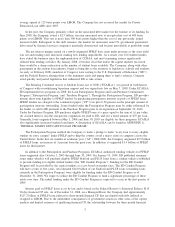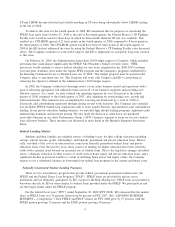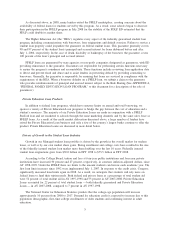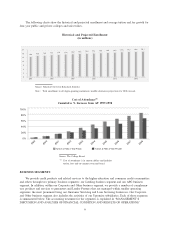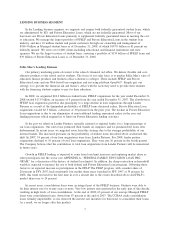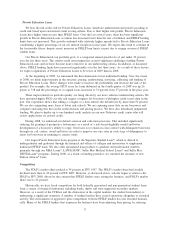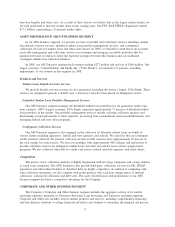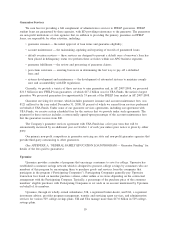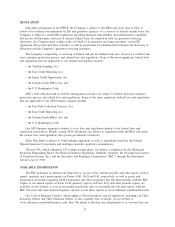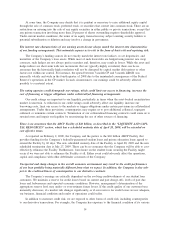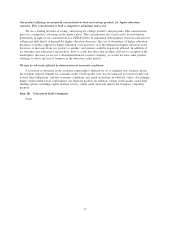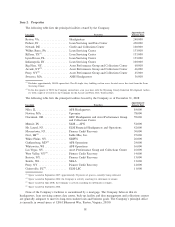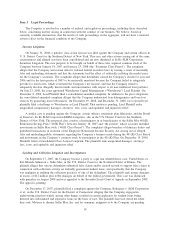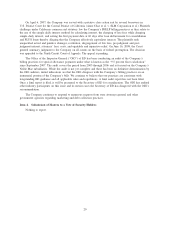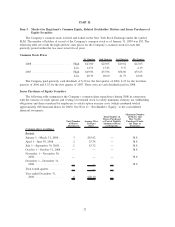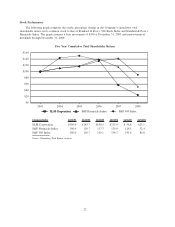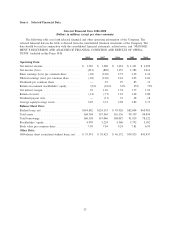Sallie Mae 2008 Annual Report Download - page 14
Download and view the complete annual report
Please find page 14 of the 2008 Sallie Mae annual report below. You can navigate through the pages in the report by either clicking on the pages listed below, or by using the keyword search tool below to find specific information within the annual report.Item 1A. Risk Factors
The Company faces a variety of significant risks that are inherent in our business. Risks that affect the
Company may be grouped into the following categories: financial and funding, credit, operations, legislation
and regulation, and market competition. Some of the more important risk factors that affect our business are
described below.
Our business continues to be affected by the significant funding constraints in the credit market, depen-
dence on various government funding sources, and higher and more volatile funding costs, both in absolute
terms and relative to competing market instruments.
2008 was an extraordinarily disruptive year for the financial services sector. Tremendous volatility in the
credit markets and significant declines in values affected all asset classes, including FFELP assets, which are
no less than 97 percent guaranteed by the federal government. The disruption in the credit markets and
legislative changes in the economics of the FFELP resulted in challenges for the Company to fund new loans
at positive spreads and re-finance our existing portfolio.
The Company was able to meet the demand for new loan originations under the FFELP through funding
and liquidity programs established by the federal government. Several of these programs are described in the
“LIQUIDITY AND CAPITAL RESOURCES” section of this Form 10-K. These programs are not permanent
and may not be extended upon their expiration dates. While the Company expects a normalization of market
conditions, there is no assurance that the credit markets over time will return to a level that makes FFELP
loan originations available or profitable beyond the time these programs are presently scheduled to end.
FFELP loans originated under the government programs mentioned above must be re-financed by the
Company or sold to the government by a date determined under the terms of the programs. There is no assurance
that the credit markets will return to a level that makes re-financing of these loans available or profitable before
that date. If this is the case, the Company may sell these loans to the government, which at the current time could
result in the loss of income associated with the ownership and servicing of the loans in the future.
Since the market disruptions began, the Company has funded private, non-federally guaranteed loan
originations through term brokered deposits raised by Sallie Mae Bank. While this brokered-deposit funding market
has been functioning well, there may be an ultimate limit to the size of this market for Sallie Mae Bank. Also, this
source of funding creates certain re-financing risks because the average term of the deposits is shorter than the
expected term of the Bank’s loan assets the deposits are funding. There is no assurance that this source of funding
will continue to be available at a level and a cost that makes new private credit loan originations possible or
profitable, nor is there any assurance that the loans can be re-financed at profitable margins. If deposit funding is
not available at profitable levels, the origination of our Private Education Loans will be limited.
Recent market conditions have reduced our access to and increased the cost of borrowing for student loan
asset-backed securities. If the government programs mentioned were to prove ineffective or were terminated
and if alternative funding sources were not available, the Company may be compelled to reduce or suspend
the origination of new loans. If we were unable to find cost-effective and stable funding alternatives, our
funding and liquidity would be negatively impacted and our cost of funds could increase, adversely affecting
our results of operations.
The Company expects that current market conditions will not always persist and that access to market
funding will eventually improve and become less volatile. Even upon the expected normalization of the capital
markets, however, the Company will be exposed to typical financing risks. Factors that could make financing
difficult, more expensive or unavailable on any terms include, but are not limited to, financial results and
losses of the Company, changes within our organization, events that have an adverse impact on our reputation,
changes in the activities of our business partners, disruptions in the capital markets, events that have an
adverse impact on the financial services industry, counterparty availability, changes affecting our assets,
corporate and regulatory actions, absolute and comparative interest rate changes, ratings agencies’ actions,
general economic conditions and the legal, regulatory, accounting and tax environments governing our funding
transactions.
13


